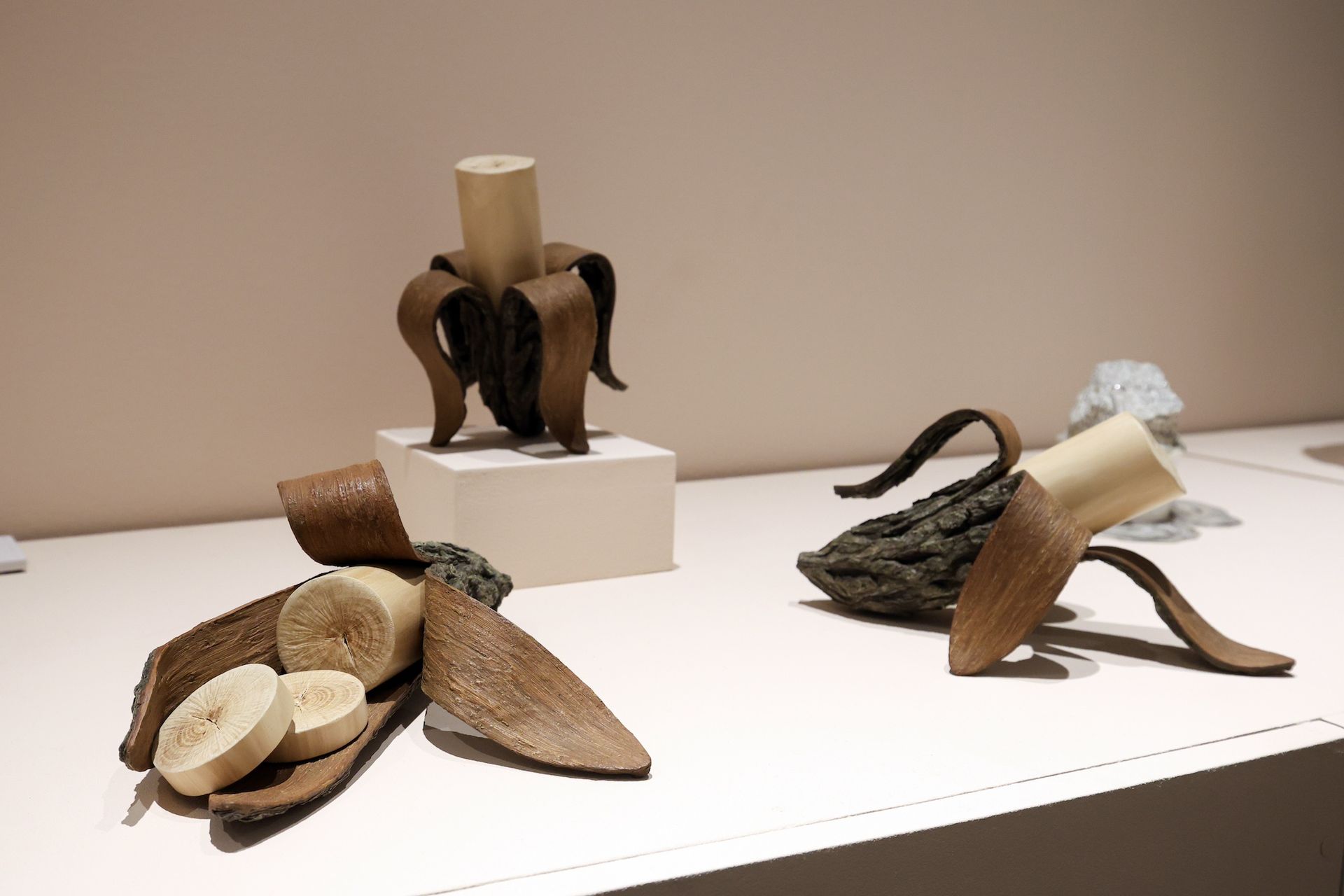By Rachel Corbett
The tragicomic saga of Maurizio Cattelan’s duct-taped banana is reaching new highs (and lows) at Miami Art Week.
Most prominent is the presence of Chiquita itself at Art Basel Miami Beach as a first-time official partner. During the VIP preview, the American banana mega-producer rolled up fruit carts and blue-and-yellow swag to the entrances of the convention centre to share its “joyful and unmistakable spirit” and celebrate the “longstanding connection between bananas and the art world”, the company said in a statement.
The higher the price, the more it reinforces its original concept
Also sharing that glee is Justin Sun, the Chinese crypto entrepreneur who paid $6.2m to buy—and then eat—an edition of Cattelan’s Comedian from Sotheby’s two weeks ago. Cattelan himself told The New York Times that the sale made him feel “fantastic”. The auction price was a hefty markup from the $120,000 that Perrotin gallery originally sold the work for at the Miami Beach fair in 2019, which Cattelan appreciated: “The higher the price, the more it reinforces its original concept.” Perrotin is still in the Comedian market, offering cheeky T-shirts (€35), a brooch (€72) and an inflatable poster (€120) on its website.
Now, banana art is proliferating throughout the week’s fairs. The artist Emil Armendariz, who goes by the name Mr Debonair, taped a sculpture of a banana with a grenade pin to the wall of Oliver Cole Gallery’s stand at the Art Miami fair, which was selling the work for $9,000. Bang-nana, as it is titled, is a play on Cattelan’s “explosive work of art”, the artist says. “It still has the comedic humour and makes people laugh.”

Joyce Lin’s Woodnanas at Design Miami© Liliana Mora
Meanwhile, at Design Miami, R & Company is displaying artist and designer Joyce Lin’s peeled-open Woodnanas, priced at $3,600 each. They were not intended as a play on Cattelan’s work, Lin says, but “it’s possible that I vaguely associate Miami with bananas because of it”.
And at Art Basel, Ben Brown Fine Arts brought back Gavin Turk’s Giraffe (2021), a painted bronze sculpture that resembles a decomposing banana. Brown introduced the edition of ten at Frieze London in 2021, where they were priced at £30,000 each; now they command £50,000. “It’s rather cool,” Brown says. “We sold a couple [at Frieze] and since then, basically in the last week, sold all apart from one.” (One went to the Hill Art Foundation, he adds.) An adviser was overheard at the stand making the case to a client to buy the last one: “It’s conceptual, it’s smart. It’s not just a gimmick.” Soon after, it had sold.
Unlike Cattelan’s banana, Turk’s has a Rainforest Alliance certification sticker, indicating that a product has met sustainability standards. Turk has said that the sticker features “a picture of a cute Amazonian tree frog, which alludes to the real Amazon which is cut down and replaced by single crop banana plantations, to feed western consumer needs, not so cute”.

One of the Chiquita banana stands at Art Basel Miami Beach; earlier this year, a Florida court found Chiquita Brands International liable for funding a paramilitary group in Colombia© Liliana Mora
A similar critique has been echoed by some who accuse Chiquita of using its partnership with Art Basel as a way to “artwash” its long history of exploitation in Latin American “banana republics”. The company is “responsible for numerous cases of labour abuses, massacres and environmental damage in Latin America since the beginning of the last century”, wrote art historians Juanita Solano and Blanca Serrano in the Colombian news outlet La Silla Vacía earlier this week.
In June, after a 17-year legal battle, a Florida court found Chiquita Brands International liable for funding a paramilitary group in Colombia and ordered the company to pay $38.3m in restitution to the families whose lost relatives as a result.